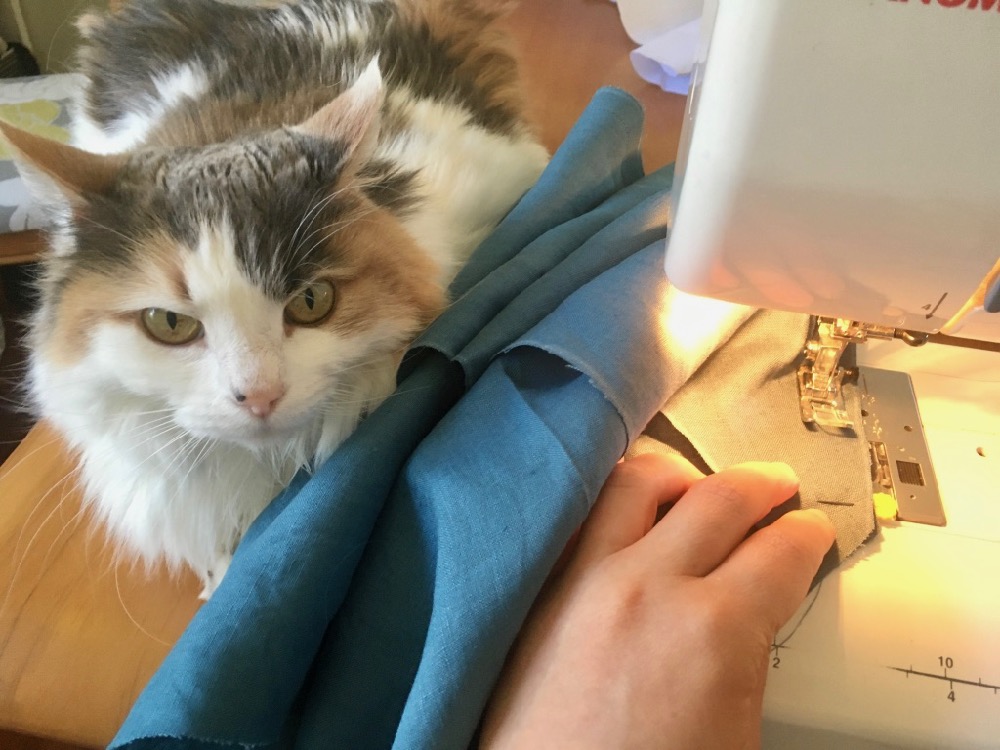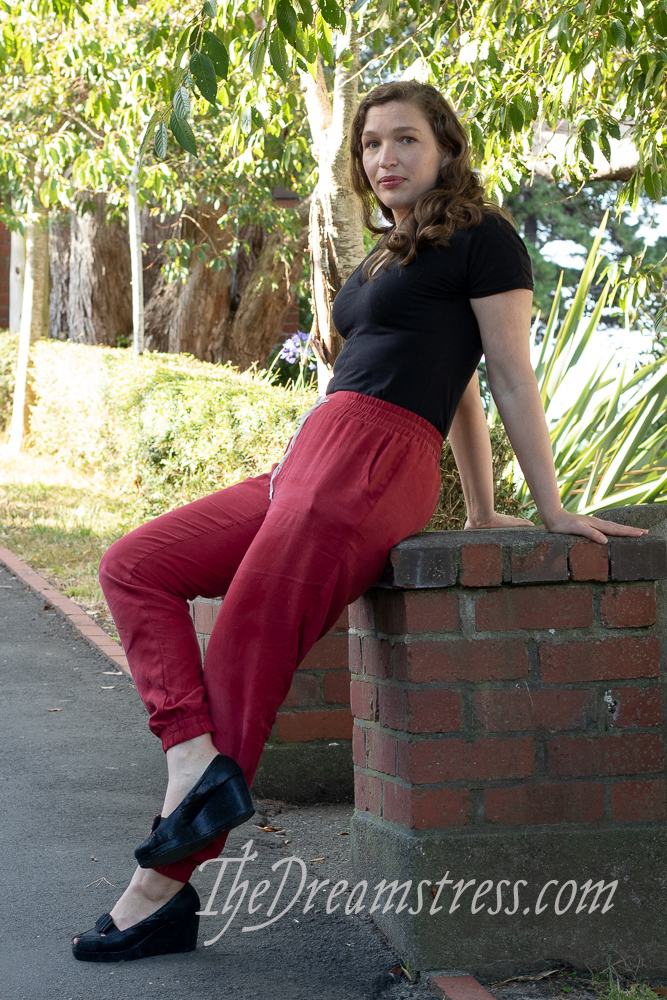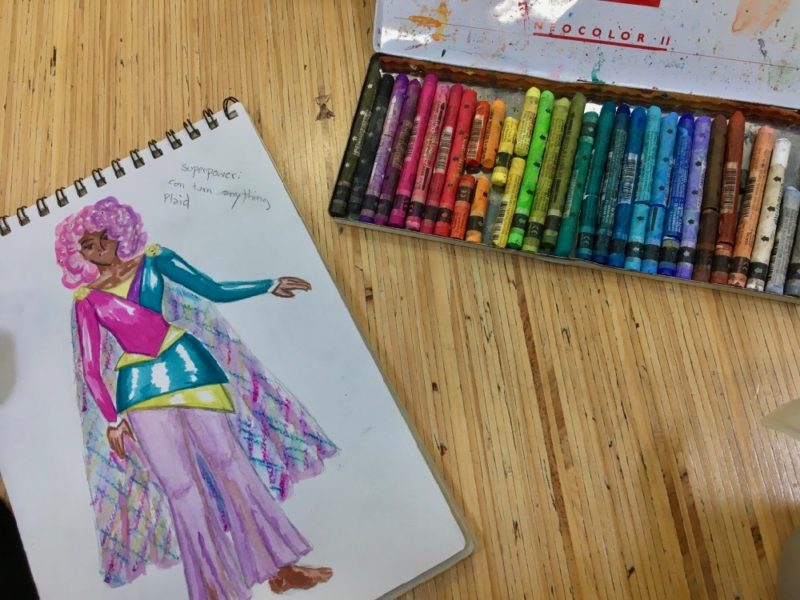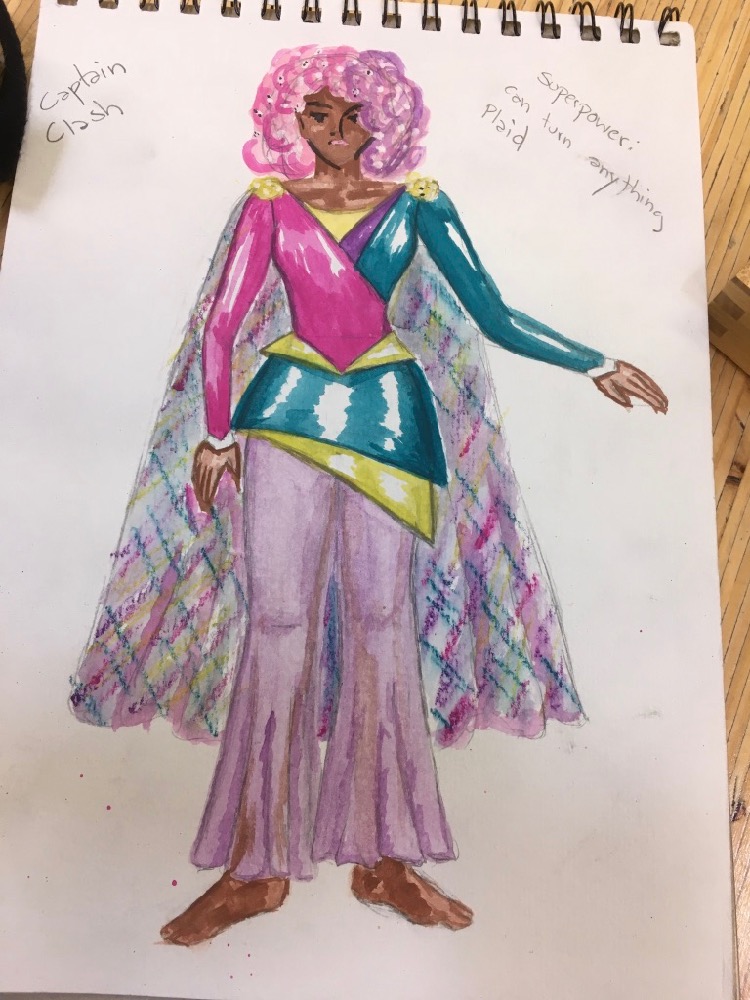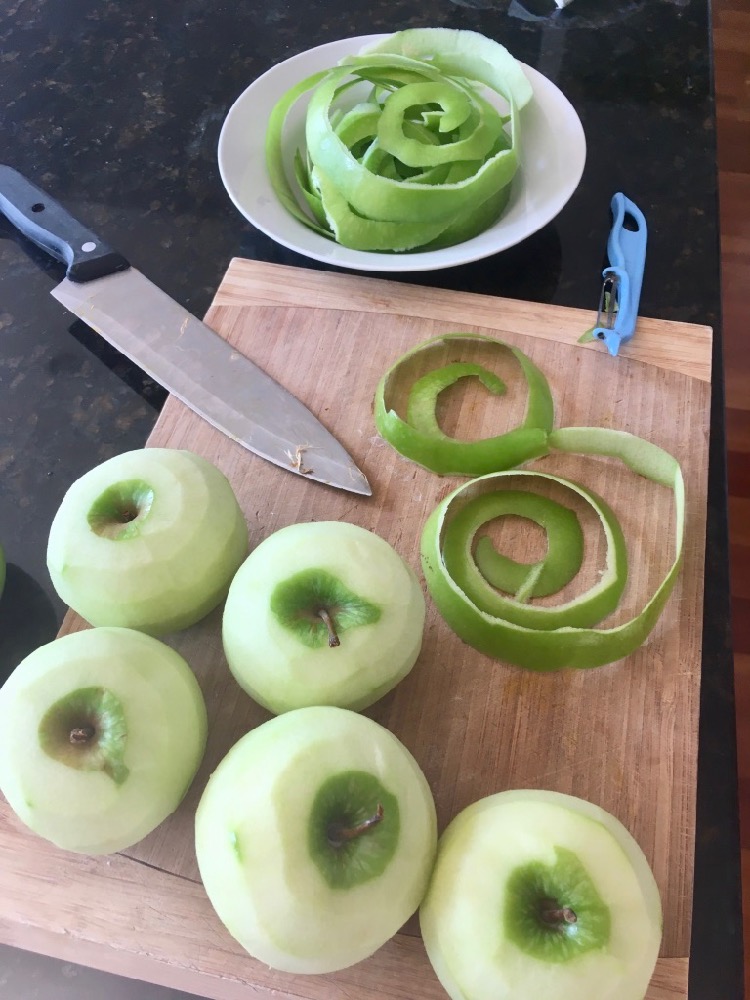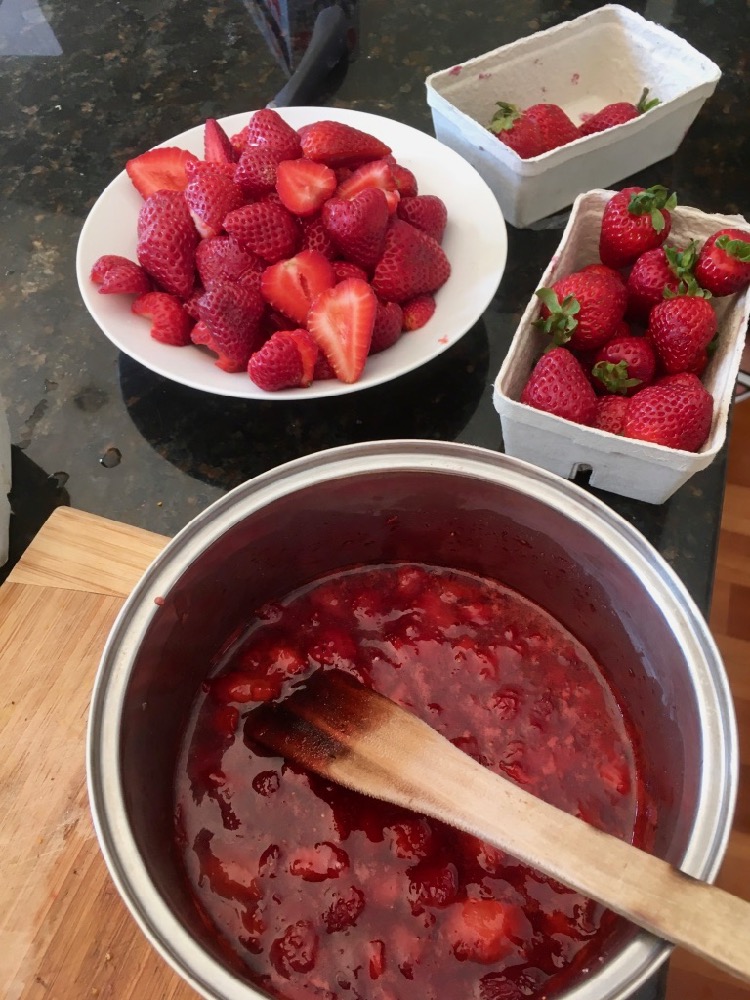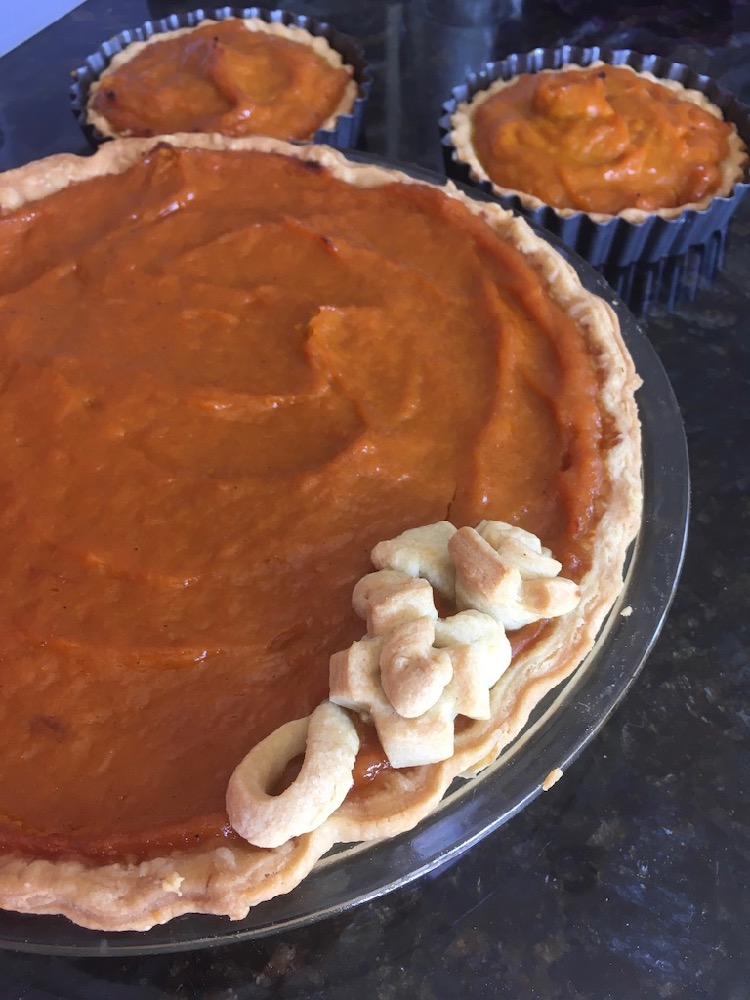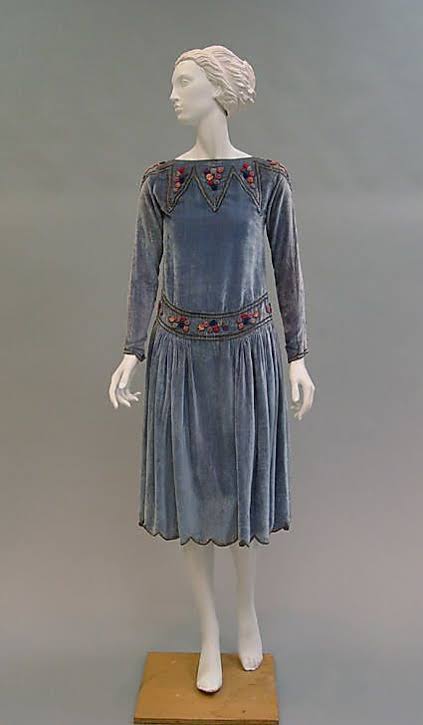I’d intended this week’s pick for Christmas week, but it felt so right for this week you’re getting it early. I guess I’ll have to find something different and fun for next week!
Last Week: a blue velvet robe de style by Poiret
There was much discussion about last week’s dress and whether it was back to front on the mannequin, with most people leaning towards a high likelyhood that it was indeed on backwards.
So, the dress was backwards, and the ratings were divided: if I broke the high scores and low scores in half at 6, We’d have two ratings: one of 9, and one of 4. But since I do a mean rating….
The Total: 7.7 out of 10
Sometimes the mean does not reflect the mode!
This week: a natural form era in red silk with rosettes and roses
Last week’s dress was all about simplicity and innovation. This week’s dress is anything but simple:

It is, however, from another era that was all about experimentation and invention. The late 1870s were a transitional period in fashion, moving from the slope of the first bustle era, through the slimmer line of the natural form era, and on to the more abrupt shelf of the second bustle era. Transitional periods are always marked by experimentation as styles find their way to the next main ‘look’
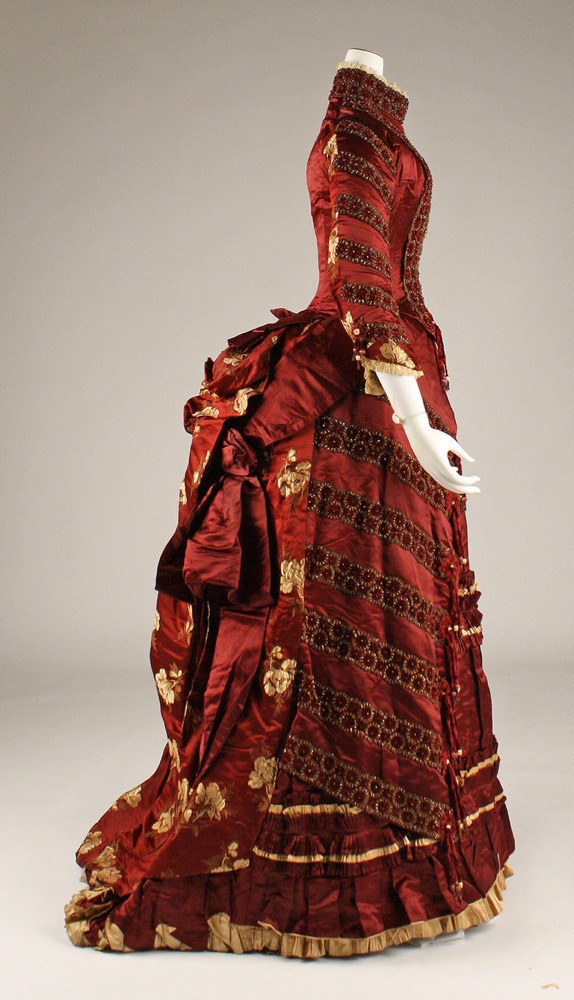
The 1870s were also an era of experimentation because of all the technological advances of the 19th century, and the ways in which travel exposed designers to works from around the world.
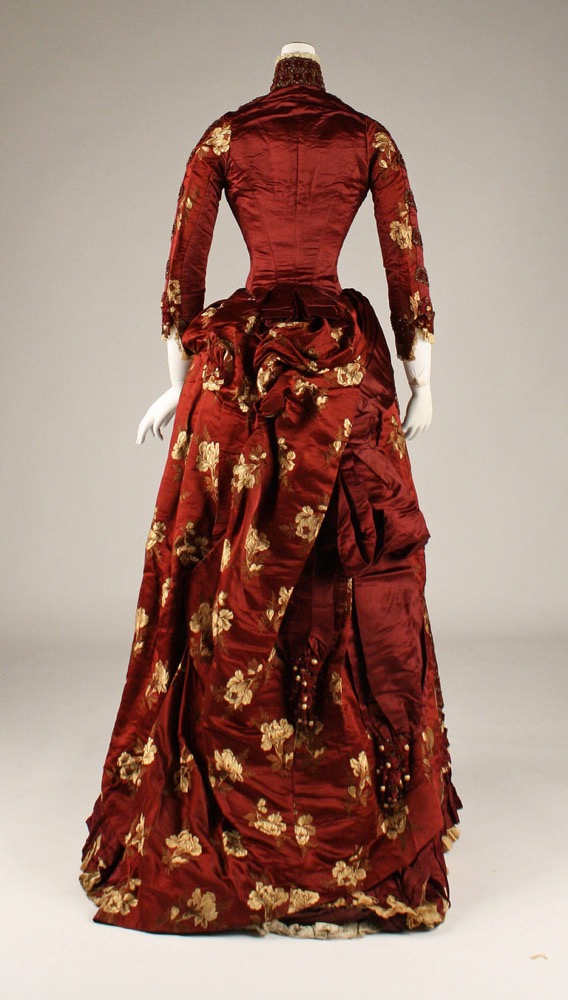
The result was outfits like this: explosions of pleating, fringing, beading, braid, bows, chenille and crimping, rosettes and ruffles, swags and sashes.

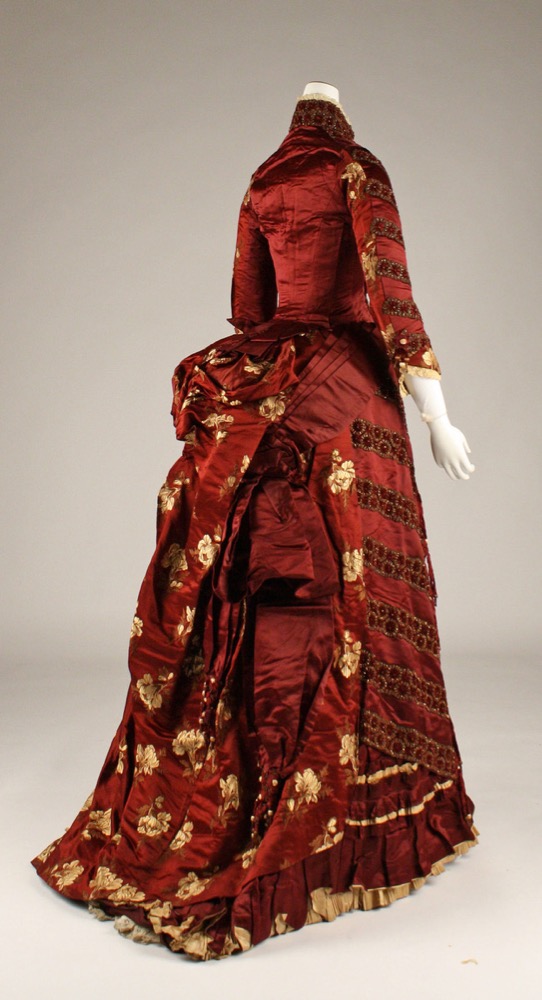
In an age of ‘more is more’, this dress has gone for it all. Plain silk satin in ruby and champagne. Brocaded silk with champagne roses on a ruby ground. Stripes of beaded, braid, and chenille starbursts. Pleating on pleating on pleating, with ruffles on top of it all. Dangling chenille tassels with bead tips falling from ribbon rosettes which finish the beaded stripes and frame the skirt pleating and buttoned bodice. And, to finish it all off, a truly enormous asymmetrical bow.
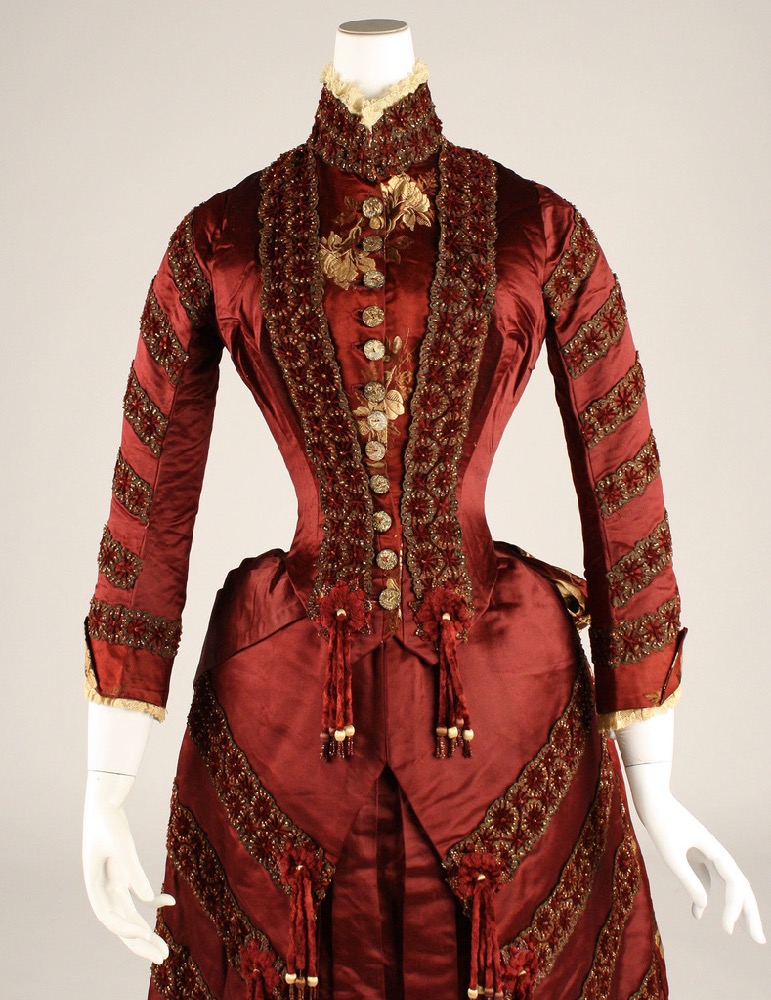
It’s a lot.
And it’s possible that the woman who bought the dress herself felt that it might occasionally be too much, because the ensemble includes a second, much plainer, day or reception bodice. The skirt and bodice we see here were both made in France by a high end label – the plainer bodice was made by a New York stores dressmaking department. This suggests the owner bought the first two while abroad, along with extra fabric (a not uncommon practice – even Worth sold extra fabric to clients), and had the simpler bodice made at home.

Sometimes a lot is what you want though. So, for a late 1870s daytime occasion that called for going all out, what do you make of this dress? Does it tickle your sartorial fancy?
Rate the Dress on a Scale of 1 to 10
A reminder about rating — feel free to be critical if you don’t like a thing, but make sure that your comments aren’t actually insulting to those who do like a garment. Phrase criticism as your opinion, rather than a flat fact. Our different tastes are what make Rate the Dress so interesting. It’s no fun when a comment implies that anyone who doesn’t agree with it, or who would wear a garment, is totally lacking in taste.
(as usual, nothing more complicated than a .5. I also hugely appreciate it if you only do one rating, and set it on a line at the very end of your comment, so I can find it! And 0 is not on a scale of 1 to 10. Thanks in advance!)


